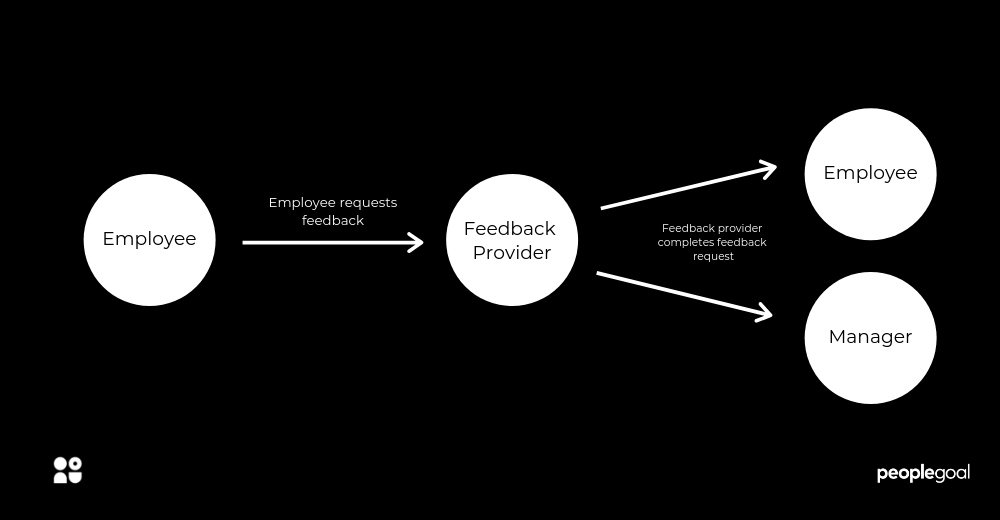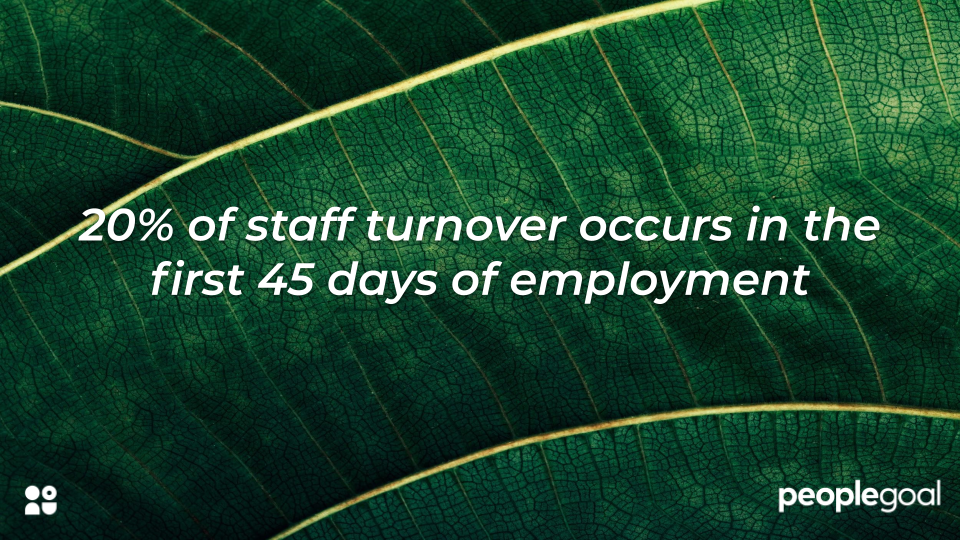This week is National Stress Awareness Week (Monday November 2nd – Sunday 9th), and the perfect moment to talk about how to deal with stress in the workplace. We’ll look at why employee wellbeing surveys are the perfect way to start.
When deadlines loom, communication fails or we struggle with work-life balance, stress creeps in. A healthy amount of stress motivates us, but too much prolonged stress can cause burnout, physical health issues and jeopardize our mental health.
How can HR support their people to cope with stress? The first step is to measure the prevalence of stress in the workplace through wellbeing surveys.
What is an employee wellbeing survey?
Employee wellbeing surveys measure various aspects of wellbeing by asking employees a range of questions.
HR also measure wellbeing through metrics such as employee turnover, employee engagement surveys and absenteeism. Employee engagement surveys are designed to measure and assess how motivated and engaged your employees are to perform their best at work each day.
The benefit of an employee wellbeing survey is that it addresses underlying issues head on. Employee wellness surveys invite employees to reflect on their physical and mental health and the ways in which the company supports them.
Wellbeing surveys may be conducted once a month to check-in with employees.
Surveys provide HR with the data it needs to create evidence-based wellness strategies that meet the needs of employees.
Benefits of conducting an employee wellbeing survey
- Employees can be honest about how a company lives up to its wellbeing values
- Anonymity means employees have an opportunity to vocalize concerns
- HR collects data for employee wellness programs or overarching wellbeing strategy
- Pinpoint problem areas or areas for immediate action
- Highlights a culture of support
- Employees feel their voice is heard
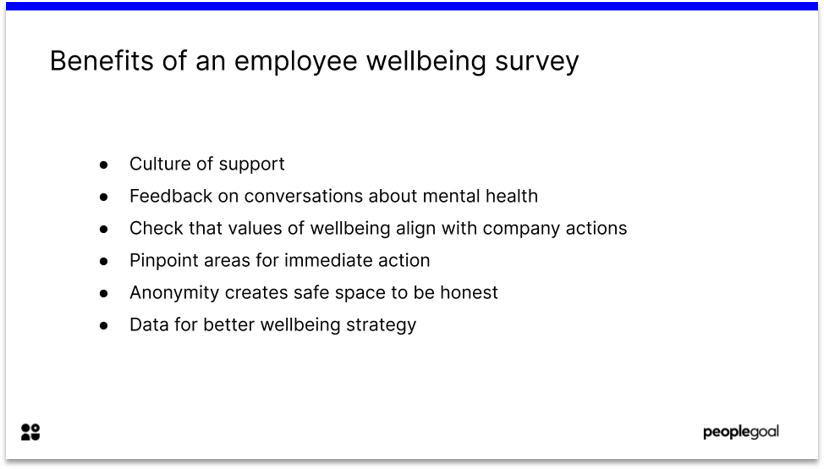
Stress Awareness: What is stress and how to tackle it
Stress is a psychological, physical and behavioural response. According to positivepsychology.com, stress occurs when we believe that we cannot meet the demands placed on us.
Stress can lead to symptoms such as :
- An inability to concentrate
- Sleep problems
- Irritability
- Panic attacks
- Isolating ourselves
- Feeling overwhelmed
Clearly, these symptoms reduce our productivity. They also effect our life away from work.
To understand how an employee wellbeing survey can help tackle stress, let’s think about the underlying causes of stress in the workplace.
Potential causes of workplace stress
- A feeling that speaking out about stress is impossible at work
- A feeling that we will let others down if we address the root causes of stress
- Miscommunications or a lack of clarity over work expectations
- A lack of boundaries between work life and home life
- Low pay
- A lack of control over workplace decision-making, a lack of autonomy
- Excessive workload
The above reveal different stressors we encounter at work. Company culture is central to many of these – a culture of open communication addresses some issues. A work environment where employees talk openly about mental health is key.
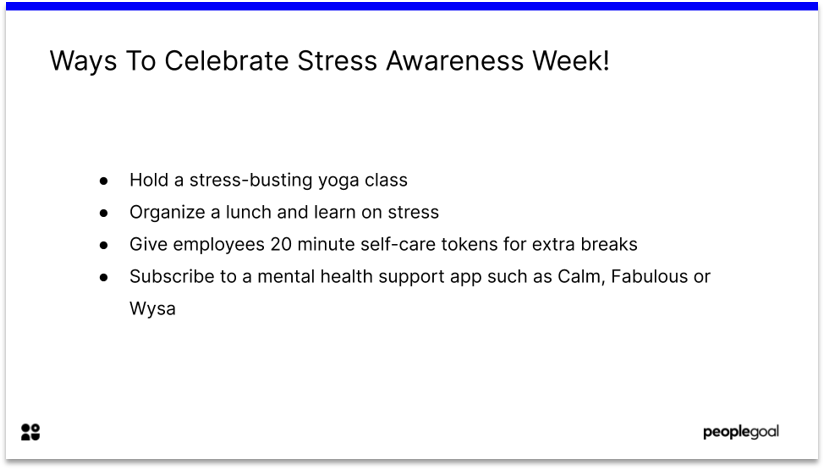
How to design an employee wellbeing survey to address stress
Take the temperature on company culture
An employee wellbeing survey is a great opportunity to check if your company lives up to its values and culture. Consider asking employees to rank the following statements on a Likert scale:
- I have heard my manager vocalize support for the company’s wellbeing programme recently.
- Conversations about mental health and wellbeing in the company make me feel there is a safe and open environment in which to talk about mental health
- The workload assigned to me allows me to achieve a healthy work-life balance
- I feel that colleagues and managers care about my wellbeing
- I have someone to talk to at work when I am feeling stressed
This is an excellent way to measure if wellbeing programs have created cultural change in your organization. Following a program designed to promote conversations about mental health, if employees still do not feel there is a supportive culture, it might be worth rethinking your strategy.
Ask for manager feedback
It’s important that wellbeing surveys adopt some of the principles of 360 Feedback – incorporating feedback from all levels of the company.
Feedback on managers can offer useful insights into employee wellbeing. The aim is not to ‘blame’ certain individuals for unhealthy company culture. Rather, managers have a crucial role to play in employee wellbeing.
Survey questions to ask to address manager’s role in employee wellbeing:
- My manager gives me a reasonable workload
- I believe my manager would be understanding if I took a sick day for mental health reasons
- I would feel comfortable asking my manager for support in sustaining a healthy work-life balance
(Rate from ‘Strongly Disagree’ to Strongly Agree’)
Managers are often responsible for communicating and implementing HR’s wellbeing strategy day to day. It’s important that you check in with them too on how confident they are with this – and give them the support and resources they need.
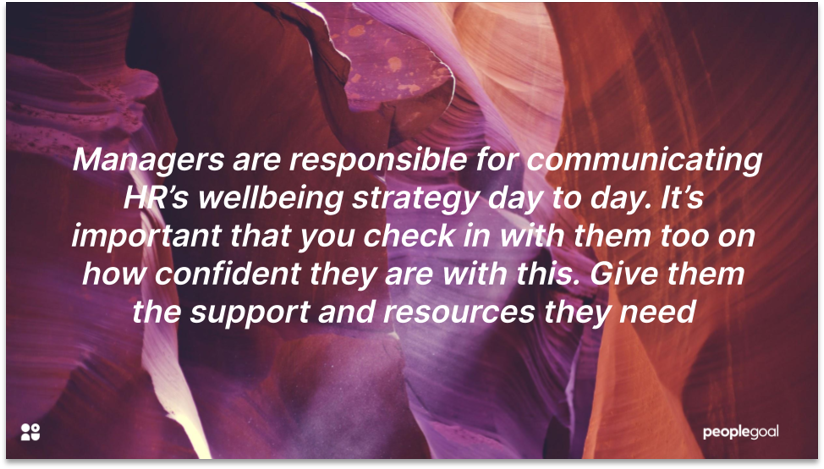
Ask about personal stressors
While the company has a role to play, we all respond to stresses differently. It’s important that an employee wellbeing survey reflects this.
HR should try to understand how employees support their own wellbeing – in terms of self-care and community. This can help HR professionals to create a wellbeing program that is relevant and impactful. Ask about:
- What techniques employees use to care for their physical health – do they exercise regularly, eat healthily?
- What techniques employees use to care for their mental health – do they talk about worries to friends and family, speak to a psychotherapist, do they take time for self-care?
- What do they think they can do to support a colleague struggling with mental health issues or severe stress?
- Why does wellbeing matter to them?
- Do they use apps or technology to support your mental health? If so, are there any they would recommend to a friend?
While these are personal responses, they help HR improve employee experience.
Find out how remote-work impacts on stress and wellbeing
If ever there was a moment to be tracking changes in employee wellbeing, it is 2020! Use employee wellbeing surveys to find out how employees adjusted to remote-work.
In particular, focus your questions on the impact on work-life balance, caring responsibilities and loneliness.
Make it explicit that HR are working to find out how they can better support staff during difficult times.
Remote work topics for employee wellbeing survey
- Impact of childcare/ other caring responsibilities on stress levels and mental health
- Ability to balance work and home responsibilities
- Whether working hours have increased due to remote work
- Whether productivity has increased/decreased
- Loneliness and Isolation

Tie in your employee engagement strategy with wellbeing strategy
Employee engagement is inextricable from employee wellbeing. Gallup found that employees who are engaged and have high well-being are also 27% more likely to report “excellent” performance at work.
Feeling challenged and that we have a sense of purpose at work gives us a reason to get out of bed in the morning.
Consider including a few employee engagement survey questions in your employee wellbeing survey. These might include:
- Managers create a shared vision that motivates me
- Most days I look forward to coming to work
- I feel recognized by my team and manager
Recognition is key here – recognition cultures promote wellbeing by expressing gratitude to employees.
Employee wellbeing surveys for responsive HR
Employee wellbeing surveys remind staff that HR is there to support them. It grounds wellbeing strategy in the voice of employees. Make sure wellbeing surveys are regular, so that HR can track what policies are working.
PeopleGoal makes the process of measuring employee wellbeing simple. Book a demo today to find out more.
Ready to 3x Your Teams' Performance?
Use the best performance management software to align goals, track progress, and boost employee engagement.



